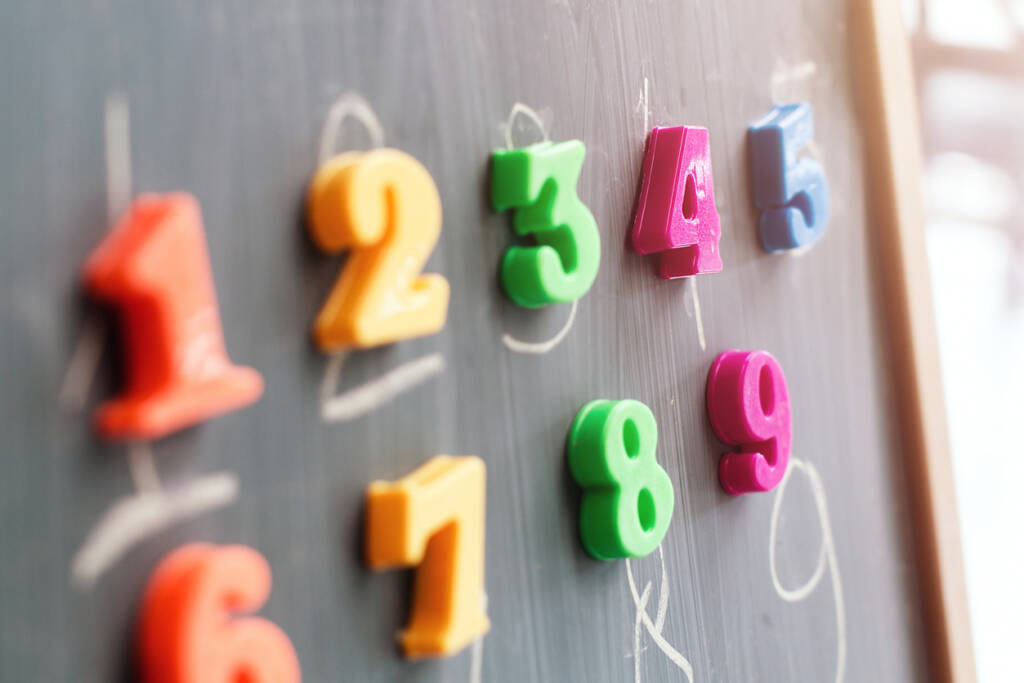
Elementary Math Grade 3

In Math Grade Three, students will learn to multiply and divide within 144 to solve real-world problems. The course provides the opportunity for students to develop an understanding of fractions and area. Students will add and subtract multi-digit numbers using a standard algorithm and will define attributes of quadrilaterals. Describing and analyzing lines is another focus of the course. Other engaging activities include learning about data, time, and measurement.
Please view the Elementary Parents Guide for Grades 3-5 with guidance on helping your student transition to online learning and thrive at VLACS.
Major Topics and Concepts
Segment One
- Reading and writing numbers from 0 to 10,000
- Composing and decomposing four-digit numbers
- Plotting, ordering, and comparing numbers up to 10,000
- Rounding whole numbers from 0 to 1,000
- Identifying even and odd numbers from 1 to 1,000
- Identifying addition and subtraction patterns
- Adding three-digit numbers
- Subtracting three-digit numbers
- Multiplying and dividing using strategies
- Multiplying with factors from 0 to 12
- Dividing with divisors from 0 to 12
- Multiplying using distributive, associative, and commutative properties
- Using graphs to represent and interpret data
- Solving one- and two-step real-world problems with data
Segment Two
- Identifying and drawing quadrilaterals
- Identifying and drawing lines of symmetry in two-dimensional figures
- Identifying and drawing points, lines, line segments, and rays
- Finding perimeter and area of a rectangle and composite figures
- Solving real-world problems involving perimeter and area
- Reading and writing fractions
- Plotting, ordering, and comparing fractions greater than and less than one
- Finding equivalent fractions
- Comparing fractions with the same denominator
- Comparing fractions with the same numerator
- Representing and identifying whole numbers as fractions
- Telling time to the nearest minute using a.m. and p.m.
- Solving real-world problems with elapsed time
- Measuring length, liquid volume, and temperature
- Solving real-world problems involving length, mass, weight, temperature, and liquid volume
- Multiplying and dividing fluently
- Solving one- and two-step real-world problems involving multiplication and division
Course Materials
To achieve success, students are expected to submit work in each course weekly. Students can learn at their own pace; however, “any pace” still means that students must make progress in the course every week. To measure learning, students complete self-checks, practice lessons, multiple choice questions, projects, discussion-based assessments, and discussions. Students and families are expected to maintain regular contact with teachers because, when teachers, students, and parents work together, students are successful.
Required Materials – Please view the list of materials before registering.
Competencies
Addition and Subtraction within 10,000
I can create addition patterns. I can create subtraction patterns. I can estimate the sum of two multi-digit numbers with the sum within 1000. I can solve addition equations with two multi-digit numbers with the sum within 10,000 using a standard algorithm. I can solve addition equations with three multi-digit numbers with the sum within 10,000 using a standard algorithm. I can solve subtraction equations with two multi-digit numbers with the difference within 10,000 using a standard algorithm
Division Facts
I can solve one-step division equations and word problems involving 0 or 1. I can solve one-step division equations and word problems involving 2, 3, 4, or 5. I can solve one-step division equations and word problems involving 6, 7, 8, or 9. I can solve one-step division equations and word problems involving 10. I can solve one-step division equations and word problems involving 11 or 12.
Multiplication and Division
I can solve multiplication equations using equal groups. I can solve multiplication equations using repeated addition. I can solve multiplication equations using number lines. I can solve multiplication equations using arrays. I can solve division equations related to one-step real-world problems. I can solve division equations using multiplication.
Multiplication Facts
I can solve one-step multiplication equations and word problems involving factors 0 or 1. I can solve one-step multiplication equations and word problems involving factors 2, 3, 4, or 5. I can solve one-step multiplication equations and word problems involving factors 6, 7, 8, or 9. I can solve one-step multiplication equations and problems involving factors 10, 11, or 12. I can solve multiplication equations involving multiples of 10 or 100.
Multplication Properties
I can solve multiplication equations using the distributive property. I can solve multiplication equations using the associative property. I can solve multiplication equations using the commutative property. I can solve multiplication equations with an unknown number represented by a symbol or letter. I can solve one-step or two-step multiplication equations and word problems using a multiplication property.
Place Value
I can read numbers from 0 to 10,000 using a given form. I can write numbers from 0 to 10,000 using a given form. I can model four-digit numbers in a given form. I can graph numbers in order up to 10,000. I can compare numbers up to 10,000. I can describe the rounding of numbers from 0 to 1000 to the nearest ten or 100. I can explain whether a number from 1 to 1000 is even or odd.
Comparing Fractions
I can identify equivalent fractions using visual representations. I can explain equivalent fractions using visual representations. I can compare fractions with the same denominators. I can compare fractions with the same numerators. I can compare equivalent fractions to whole numbers.
Fractions
I can model a fraction in multiple forms. I can explain a unit fraction. I can read fractions in multiple forms. I can write fractions in multiple forms. I can interpret fractional representations. I can create a number line by plotting fractions less than one in order. I can create a number line by plotting fractions greater than one in order.
Geometry
I can identify quadrilaterals based on their defining attributes. I can draw quadrilaterals based on their defining attributes. I can draw lines of symmetry. I can identify points and line segments in 2-D figures. I can identify perpendicular lines or parallel in 2-D figures.
Measurement
I can write time to the nearest minute using analog and digital clocks. I can write time to the nearest minute using am and pm appropriately. I can solve one and two-step real-world problems involving elapsed time. I can solve real-world problems involving measurement of liquid volume to the nearest milliliter, half, or quarter cup. I can solve real-world problems involving mass and weight. I can solve real-world problems involving measurement of length using a ruler. I can solve real-world problems involving measurement of temperature to the nearest degree.
Multiplication and Division Equations
I can identify multiplication and division patterns. I can create and extend multiplication and division patterns. I can identify if a number is a multiple of a given one-digit number. I can solve multiplication equations with two whole numbers from 0 to 12. I can solve division equations with the divisor and quotient from 0 to 12. I can solve one and two-step real-world problems involving multiplication and division within 144.
Perimeter and Area
I can calculate the perimeter of a rectangle. I can solve real world problems involving the perimeter of rectangles. I can calculate the area of a rectangle by counting unit squares. I can solve real world problems involving the area of rectangles. I can solve real-world problems involving the area of composite figures. I can solve real world problems involving the perimeter and area of rectangles. I can solve real world problems involving the perimeter and area of composite figures.
Representing and Interpreting Data
I can categorize data to use in a visual representation. I can create a table using a data set. I can create a pictograph using a data set. I can create a line plot using a data set. I can solve one-step problems using a visual representation of data. I can solve two-step problems using a visual representation of data.

